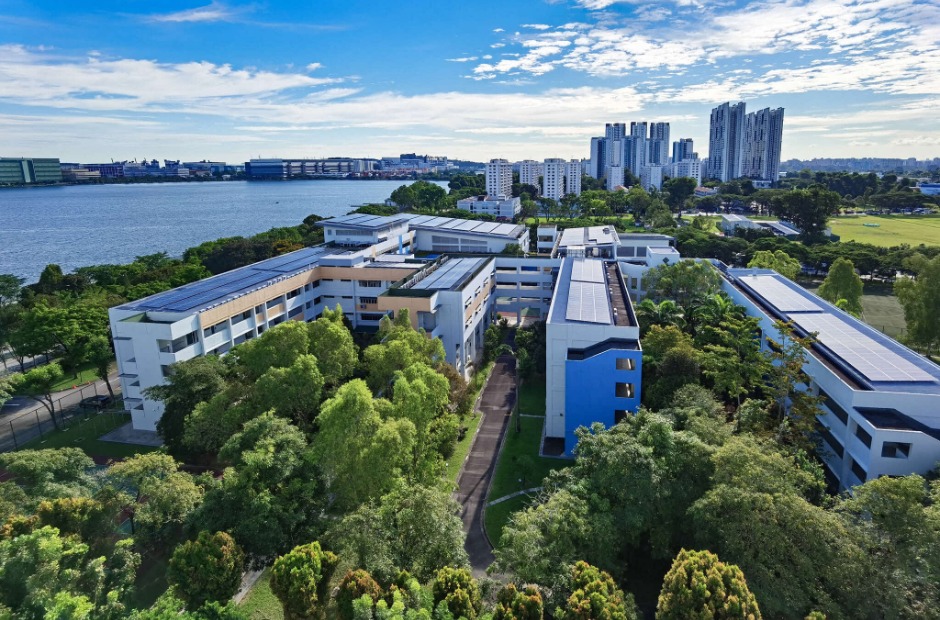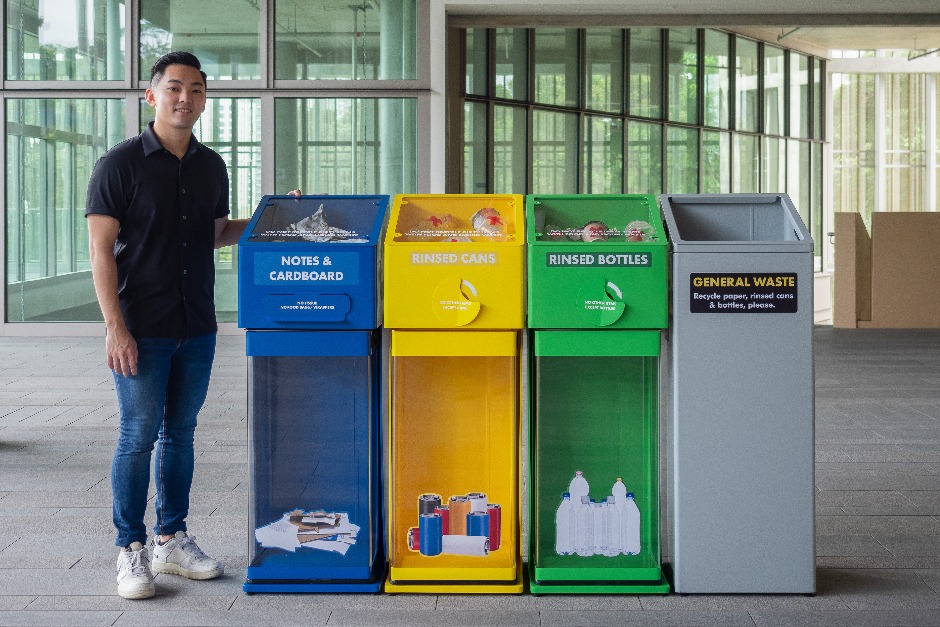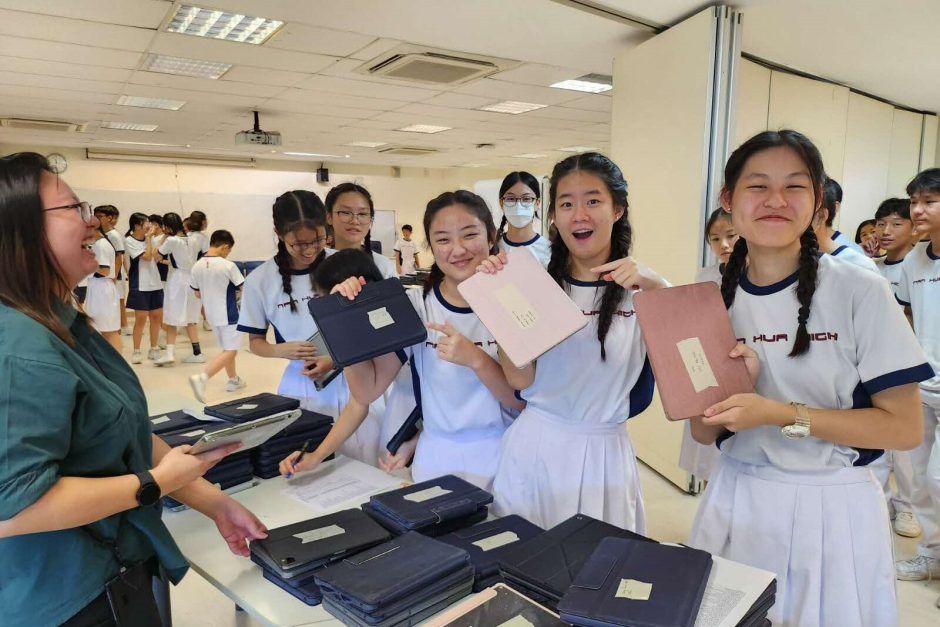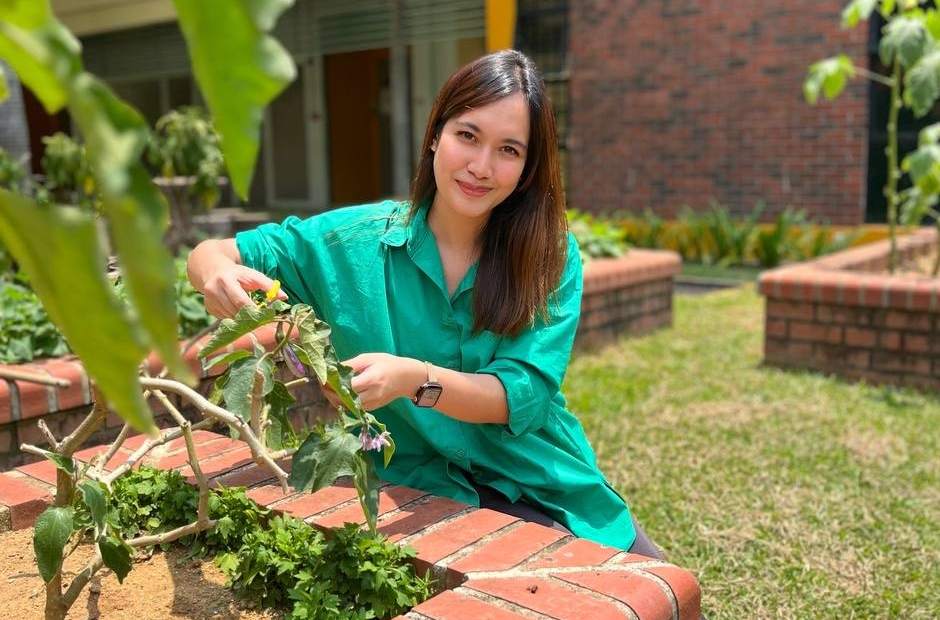Rainforest eco-habitat
Commonwealth Secondary School



From top: Lessons in progress in the Rainforest, the flooded forest after a heavy downpour, and edibles in the Indoor Farm. (Photos by: Commonwealth Secondary School)
Nestled between two classroom blocks is Commonwealth Secondary School’s very own rainforest.
This eco-habitat is just one of six in the school – the others being Gardens by the Corridor, Indoor Garden, Marine Aquarium, The Stream, and The Wetland. The school also has Outdoor and Indoor Farms on campus. These spaces support the eco-stewardship elements of the curriculum.
Each of these habitats serve as outdoor classrooms, where students come up-close with real eco-systems in action, learning about the interactions of organisms and how they depend on one another for survival. The spaces host a range of lessons, including Geography and Biology, with the habitats providing a crucial nexus between theory and reality.
These habitats provide opportunities to teach students about how nature complements our City in a Garden. During heavy downpours, the Rainforest eco-habitat showcases a contained mini flash flood, turning into the school’s own version of a ‘flooded forest’. Students could see for themselves how eco-habitats like the Rainforest and Wetland hold rainwater, slowing down surface runoff into the canal outside the school and providing relief for the drainage system.
The school also has a ‘farm to table’ programme where students learn about food production and security issues in lower Secondary Science and Food and Consumer Education lessons.
You can read more about the school’s environmental education efforts in this Straits Times article or visit this microsite to find out more about the school’s Green Plan.
Urban farm
Spectra Secondary School



From top: A spinach harvest at the Edible Learning Garden, Spencer the scarecrow at the rice paddies, and students showing off the sweet corn they picked. (Photos by: Spectra Secondary School)
Rice, leafy vegetables, melons, sweet corn… Spectra Secondary School’s green spaces are a foodie’s dream.
Rice is grown on what used to be concrete spectator stands at the school football field. The rice terraces come complete with a scarecrow named Spencer – built by teachers to keep young shoots safe from hungry birds – while the rest of the urban farm resides on the school’s rooftop.
These farming plots are lovingly tended to by students, staff, and volunteers. To empower students to care for the community, the bulk of their harvest is used for charitable causes. The school organises farmers markets to sell their fruits and vegetables, with the proceeds going towards students on financial assistance. They also donate fresh produce to charities like Sree Narayana Mission.
Teacher Phoon Lyvenne, who masterminded this project and the accompanying Garden-Based Serving Learning programme, says that her goal is to “get more students involved in experiential hands-on learning activities”.
Read more about this garden or watch this video of the students in action.
Green learning areas
Blangah Rise Primary School



From top: The Garden of Hope, the Bamboo Terrace, and students presenting “The Green Dragonflies and Their Swampy Friends” to parents during their Open House. (Photos by: Blangah Rise Primary School)
The school’s three green learning areas opened in May 2022.
The Garden of Hope is an urban garden, which harvests rainwater for self-irrigation. The Bamboo Terrace is a visual reminder of the growth mindset that both teachers and students should have. The Biodiversity Corridor, featuring flora and fauna, surrounds the classrooms to bring nature closer to the school community. Students can view different animals, like stick insects and fish, up close, and the star resident is a senior rabbit that the school took in when it was given up by its owner. The animals are cared for by the school’s staff and students.
To spread the word about environmental issues, teachers and students have even collaborated on an illustrated children’s story book – The Green Dragonflies and Their Swampy Friends – inspired by the biodiversity around their school to share how everyone can play a part in caring for the green spaces and the wildlife around us.
Augmented Reality garden
Holy Innocents’ High School




From top: Swings, benches and a shaded pavilion with seating makes the eco-garden a favourite hangout for the school community; students who are part of the team that volunteered to create the school’s AR stations. (Photos by: Holy Innocents’ High School)
Tech meets nature in this manicured eco-garden.
As part of celebrations to mark the school’s 130th anniversary in 2022, art teacher Mr Abdul Hadi worked with a group of seven student volunteers from the Journalism and Broadcasting CCA to turn their school eco-garden into an augmented reality (AR) learning space. Based on the theme of Past, Present and Future, visitors can scan a QR code to see how the garden – and other spaces in the school – used to look or could look. .
The eco-garden was once a field where students from the Scouts CCA would practise camping skills. Now, it’s a little oasis of landscaped greenery, with a pond nestled in the middle. Swings and benches dot the space, inviting the school community to sit amid nature.
As for the future, the student volunteers imagined outdoor classrooms set up beside the pond, with interactive touch screens that teachers could use for lessons.
“The students only had a month to design and execute the AR project, and they did all the drawing and illustrating on their own,” says Mr Hadi, who is himself a self-taught AR developer. “I just guided them along.”
While pond-side screens are not yet a reality, the eco-garden is already busy. During Science classes, for example, students collect and prepare soil samples to figure out the conditions of soil health. Biology students study flower reproduction by taking photos of the flora to determine mode of pollination. Art classes on photography, videography, and composition are also held in the picturesque space. Outside of formal lessons, the garden is one of the most popular student hangouts in school. “With the swings, benches, and shaded pavilions, our students love spending time here during recess and after school,” Mr Hadi adds.






